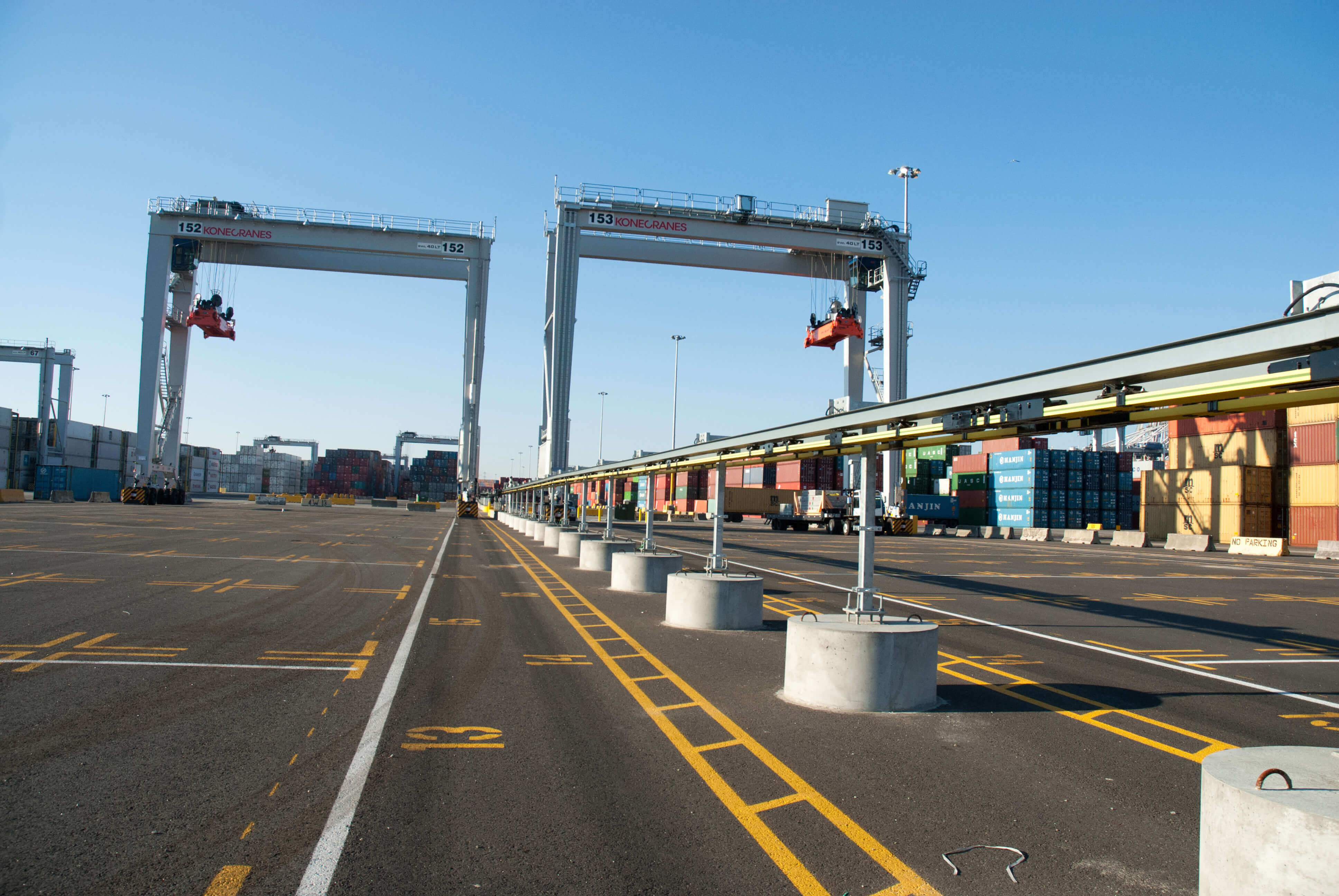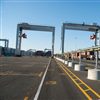The Georgia Ports Authority Board on May 22 approved the purchase of three electric rubber-tired gantry cranes for the Appalachian Regional Port in Chatsworth, Ga.
“The eRTGs provide the most efficient method for completing container moves on terminal,” said GPA Executive Director Griff Lynch. “These machines will lessen the impact of our operations on the surrounding community by running more quietly, and by virtually eliminating diesel emissions.”
The ARP, an inland port to be operated by the GPA, will open additional markets across Alabama, Tennessee and Kentucky. On 42 acres in Northwest Georgia’s Murray County, the site will feature on-terminal rail service from CSX Transportation. The location is adjacent to U.S. 411 and features easy access to Interstate 75. The facility will handle import, export and domestic cargo.
The decision to install eRTGs in Chatsworth continues a transition begun at the Port of Savannah’s Garden City Terminal. GPA’s initial eRTG project was the first installation of its kind at a port in North America. Electric RTGs virtually eliminate emissions of carbon dioxide, nitrogen oxide and particulate matter compared to diesel-powered RTGs. Through efforts such as electrifying ship-to-shore cranes and refrigerated container racks, the Port of Savannah avoids the use of more than 5.4 million gallons of diesel annually.
The cranes are powered by 480-volt connections and have the capacity to regenerate power back to the electric grid. This innovative feature allows the eRTGs to power themselves for 18 minutes of every operating hour. The eRTGs were developed through collaboration between GPA engineers and the Finnish company Konecranes. The power system was designed by Conductix-Wampfler.
The electric cranes to be used at the inland terminal will reduce fuel consumption by more than 95 percent per crane. The GPA received a 2016 EPA Clean Air Excellence Award for its eRTG program.
Another environmental benefit of the inland port model is reduced truck miles. It allows exports to be trucked for shorter distances and staged at the intermodal yard, where they are loaded onto trains moving hundreds of containers in a single trip.
The GPA broke ground on the Northwest Georgia inland terminal in January 2017. The ARP is expected to open in summer 2018, delivering goods more efficiently to GPA’s Garden City Terminal. At the start of operation, it will have an annual capacity of 50,000 containers. A 10-year development plan will then double that capacity.
Through improved access to low-cost rail and a ready source of empty containers returned to the inland rail yard, inland terminals serve as magnets for industry, offering important opportunities for economic development.
“There is already excitement in the marketplace over the potential benefits of our inland terminal in Chatsworth,” said John Trent, senior director of strategic operations and safety at the Georgia Ports Authority. “We’re hearing from exporters and distribution project developers who would like to tap into the efficiencies of the ARP, and who we expect will bring jobs to the region.”
Also on May 22, the board approved moving into the design phase for a project to upgrade lighting at Ocean Terminal in Savannah. This project continues upgrades which were started at Garden City Terminal.
Fixtures to be installed at the breakbulk terminal will reduce light pollution by focusing more light toward the ground. High-tech controls will cut energy consumption 60 percent by phasing on the lights only when needed.
Efforts to protect and preserve the surrounding wetlands, reduce emissions and help the surrounding community also include:
- Creating 14 acres of wetlands that treat 100 million gallons of water annually and are a diverse wildlife habitat in the heart of the fourth busiest container terminal in the U.S.
- Protecting about a dozen trees that are more than 200 years old located at Garden City Terminal.
- Implementing 84 refrigerated container racks.
- Retrofitting 11 locomotives with automatic engine stop-start devices.
- Reducing truck idling time through automated gates, extended hours and the Port of Savannah's Cross Terminal Roadway, along with last mile road projects completed in conjunction with the GA DOT.
- Reducing idling time for trains, trucks and personal vehicles with improvements to on-terminal rail yards and by drastically reducing the use of 21 at-grade rail crossings.
- Sponsoring the Caretta Research Project, which has released 212,000 sea turtle hatchlings.

